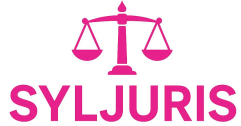In 2025, diversity, equity, and inclusion (DEI) programs are under renewed attack, led in significant part by the Trump administration’s rollback of federal DEI initiatives. Characterizing DEI as “woke” overreach, the administration has cut funding, limited agency-level programs, and encouraged states to challenge what they view as race or gender-conscious initiatives. This shift has created new risks for employers who remain committed to fostering fair and inclusive workplaces.
Yet abandoning DEI altogether is neither legally required nor strategically wise. DEI programs are not about giving handouts or providing special favors. They exist to ensure that qualified women, minorities, and historically marginalized groups receive fair opportunities — opportunities that, too often, have been denied through systemic bias and outdated practices. Many of these candidates have every credential but are overlooked for equally qualified counterparts who benefit from entrenched networks and implicit bias.
Even in this anti-DEI climate, employers still have a legal and ethical obligation to create workplaces free from discrimination and harassment, consistent with Title VII of the Civil Rights Act and similar state protections. Pulling back on DEI without careful analysis can actually heighten an organization’s risk of discrimination claims, as legacy hiring or promotional systems may allow unlawful bias to resurface.
A resilient DEI policy in 2025 should focus on fair opportunity, not preference. Avoid language that implies quotas or numerical targets that could be challenged as unlawful preferences. Instead, emphasize the organization’s commitment to removing structural barriers and rooting out bias so that every qualified candidate, regardless of background, has an equal chance to succeed. For example, instead of stating, “We will hire 20% more women,” a stronger legal framing would be, “We are committed to reviewing and improving our hiring processes to ensure qualified women and minorities are not excluded by implicit bias.”
DEI initiatives should also be anchored in legitimate business objectives. Courts, regulators, and stakeholders increasingly expect organizations to connect DEI to measurable business needs, such as improving team performance, boosting innovation, enhancing customer relationships, and managing compliance risks. These goals help position DEI as a practical and essential management strategy, rather than a political project.
Training remains crucial. Managers and supervisors must clearly understand how to implement DEI principles while respecting anti-discrimination laws and avoiding the appearance of reverse discrimination. A single poorly handled conversation or misguided manager directive can transform a well-intentioned DEI program into a source of litigation. Comprehensive and ongoing training is the best defense.
Given the rapidly changing legal landscape, organizations should regularly audit their DEI policies with qualified counsel or experienced HR professionals. Audits can identify potential vulnerabilities, ensure that initiatives are tied to a neutral and business-related purpose, and document legal defensibility if a program is ever challenged in court.
Finally, employers should reaffirm their commitment to fairness. Even amid political attacks, the core mission of DEI should remain: ensuring that qualified people are not denied opportunities simply because of who they are. DEI is not charity. It is about removing systemic unfairness so that every capable candidate has a genuine chance to contribute.
Trump’s 2025 rollback of DEI initiatives is part of a wider backlash, but it does not erase longstanding anti-discrimination laws or the core values of workplace fairness. However, we should wait to see if this SCOTUS continues its assault on DEI and the principles that created these policies. Employers who proactively adapt their policies, ground their programs in legitimate business interests, and reinforce them with sound legal advice will be best positioned to withstand this challenging environment — and continue building a diverse, equitable, and inclusive workforce.

